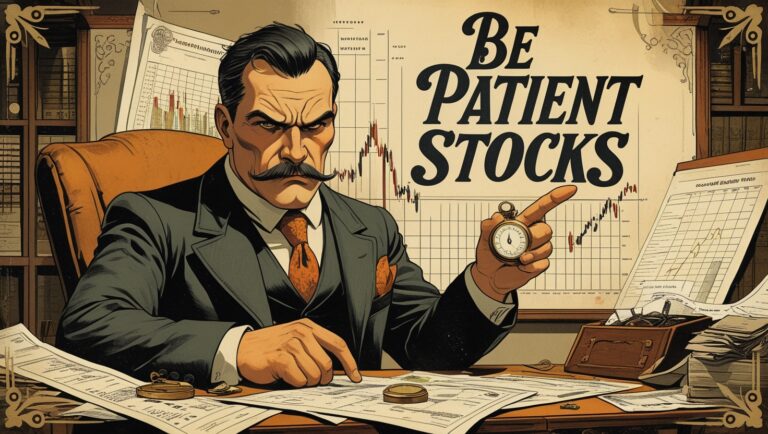Thematic Investing Explained: How to Invest in Macro Trends
Thematic Investing Explained: How to Invest in Macro Trends
Discover thematic investing and learn how to invest in major macro trends like technology, clean energy, and healthcare. I’ll explain how I use themes to spot opportunities and build a smarter long-term portfolio.

Table of Contents
When I first heard about thematic investing, I thought it was just another buzzword. But the more I explored it, the more I realized how powerful it can be. Instead of just buying random stocks or broad indexes, you focus on big themes shaping the future—like artificial intelligence, renewable energy, or cybersecurity.
For me, thematic investing has become a way to align my portfolio with where I believe the world is heading. If a trend is likely to last decades, I want to position myself early.
Why Macro Trends Matter
Macro trends are large-scale shifts that impact industries for years, even decades. Think about the rise of the internet in the 1990s, smartphones in the 2000s, or electric vehicles today. Investors who spotted these trends early and held on made incredible returns.
When I look for a theme, I ask myself: “Is this just a short-term fad, or is it a structural change?” If it’s structural—like aging populations driving demand for healthcare—it deserves a place in my portfolio.
Examples of Popular Investment Themes
Some of the themes I personally follow include:
- Artificial Intelligence (AI) – From machine learning to robotics, AI is transforming industries.
- Clean Energy – Solar, wind, and EVs are reshaping the energy sector.
- Healthcare Innovation – Aging populations create long-term demand for medical breakthroughs.
- Digital Finance (Fintech) – Cryptocurrencies, blockchain, and online banking are shifting how money moves.
Each of these is more than just hype—they’re multi-decade growth stories.
How to Invest in Themes
There are two main ways I approach thematic investing:
- ETFs (Exchange-Traded Funds) – The simplest option. Thematic ETFs track a group of companies tied to a theme, like AI or renewable energy. This spreads out the risk while keeping me exposed to the trend.
- Individual Stocks – Riskier but potentially more rewarding. Here, I look for companies leading the trend, like Tesla in EVs or Nvidia in AI.
Most of the time, I lean toward ETFs for simplicity and diversification.
The Risk of Thematic Investing
As exciting as it sounds, thematic investing isn’t risk-free. Some themes get overhyped, leading to overpriced stocks. I remember chasing a “hot” theme once, only to see the ETF drop 40% within a year. That taught me to check financials and valuations before buying in.
That’s also why I combine thematic exposure with a diversified core portfolio. I don’t go all-in on one theme—I balance it with safer assets.
My Approach to Macro Trend Investing
What works for me is dedicating a portion of my portfolio—usually around 10–20%—to thematic investing. This way, I get exposure to high-growth areas without risking everything.
For example, I might have a clean energy ETF, an AI ETF, and a few fintech stocks, while keeping the rest of my portfolio in broad market funds. It gives me both stability and growth potential.
Want My Exact Strategy?
If you want to see how I personally mix thematic investing with my core strategy to build income from stocks, I cover everything step by step in my ebook: Pay Bills with Stocks.
Inside, I explain how I pick themes, which ones I avoid, and how I use them to actually cover real-life expenses—like paying bills—through the stock market.
Final Thoughts
Thematic investing is about spotting where the world is going and positioning your portfolio to benefit. It’s not about chasing every shiny trend—it’s about identifying the macro shifts that will drive industries for decades.
By combining themes with a balanced allocation, you can capture growth while protecting your wealth.
And if you want to see how I personally use themes to create steady income, don’t forget to check out my guide: Pay Bills with Stocks.
One of the lessons I’ve learned is that not every macro trend turns into profits right away. Some themes take years to mature, and in the early stages, they can be volatile. That’s why patience becomes one of the most valuable skills an investor can have.
Sometimes a theme may look promising but ends up fizzling out. I remind myself that just because something is “the future” doesn’t mean it will automatically make money today. I’ve been burned before chasing hype too quickly, and it taught me to focus on fundamentals, not headlines.
I also like to track how much institutional money is flowing into a theme. When big players like pension funds or asset managers start allocating, it often signals that the theme has staying power. Following the money gives me more confidence in my picks.
Another key point I’ve discovered is that thematic investing works best when blended with traditional strategies. I never go all in. Instead, I treat themes like satellites around the core of my portfolio, adding growth potential without destabilizing my entire plan.
When I invest in themes, I pay attention to global factors too. A trend may be booming in one country but slowing in another. For example, clean energy adoption varies depending on government policies. Looking globally helps me understand which markets have the strongest tailwinds.
One advantage of thematic ETFs is that they often expose me to smaller, innovative companies I wouldn’t have found on my own. Some of these firms have huge upside if the theme plays out, but they’re safer to hold as part of a diversified ETF than buying individually.
Over time, I’ve noticed that macro trends often overlap. For example, AI plays a role in clean energy, healthcare, and fintech. This overlap can amplify growth, but it also means I need to watch out for duplication in my holdings.
I also ask myself whether a theme will continue to matter during downturns. Resilient themes—like healthcare—tend to perform better when the economy slows, while riskier ones, like luxury tech, might struggle. Building that balance makes my portfolio stronger.
One of my favorite strategies is to layer into themes slowly, using dollar-cost averaging. Instead of trying to time the perfect entry, I invest steadily over time. This smooths out volatility and keeps me committed without worrying about daily price swings.
I’ve also learned that exit strategies are just as important. Not every theme deserves to be held forever. Sometimes the story changes, growth slows, or valuations get too stretched. Having a plan for when to trim or exit keeps me from holding on too long.
For beginners, I recommend starting with broad thematic ETFs rather than chasing individual trend stocks. It’s a safer way to get exposure while learning how these themes behave in real market conditions.
Another factor I weigh is whether the theme aligns with my own interests. If I’m excited about a sector, I naturally stay more engaged in tracking its progress. Passion helps me stay consistent, especially when short-term volatility tempts me to give up.
Thematic investing also makes me feel like I’m participating in shaping the future. There’s something motivating about owning pieces of industries that are changing the world. It adds meaning to the process, beyond just financial returns.
Still, I never forget the golden rule: themes are powerful, but they are not a shortcut. They work best as part of a disciplined, diversified approach. It’s tempting to chase the hottest story, but the steady, balanced investor usually wins over time.
And finally, if you want to see exactly how I balance thematic investing with steady income strategies, I go step by step in my ebook: Pay Bills with Stocks. It’s the system I personally use to turn themes and core investments into consistent profits that cover real-life expenses.

Stay ahead in the stock market! Subscribe to our newsletter and receive exclusive stock flow reports, trading insights, and actionable tips directly in your inbox. Join thousands of traders who get our updates first.







